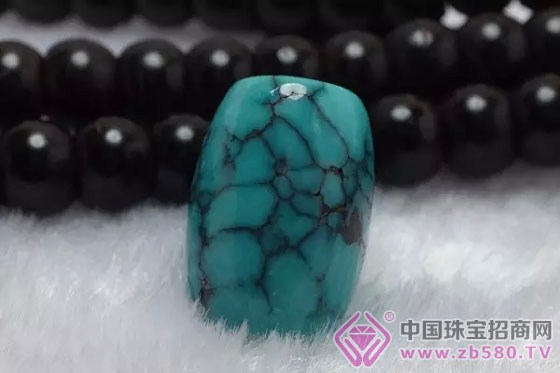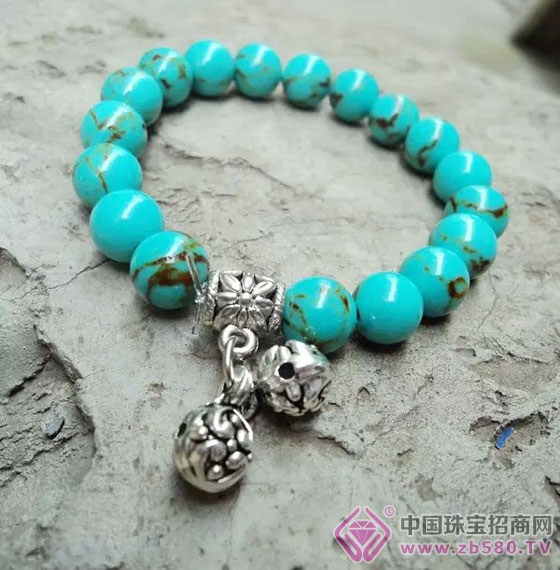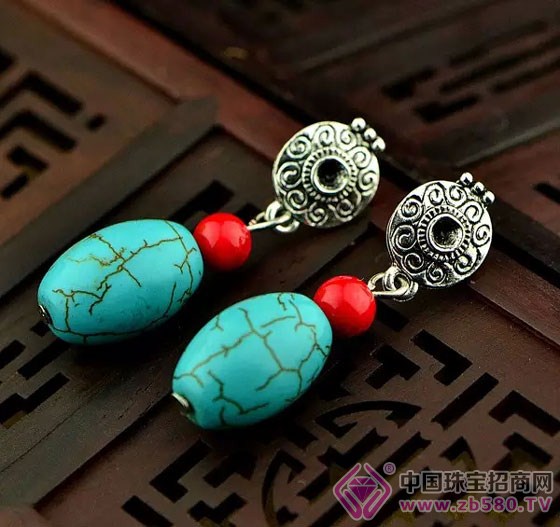In ancient China, only the rulers with the highest powers and the royal aristocrats could wear a turquoise crown, which shows that the status of turquoise is extraordinary. So how does turquoise get favored?

Turquoise is a self-colored gemstone that is a fully hydrated copper aluminophosphate. The transparency of the turquoise is opaque and the lower part of the sheet is translucent. The polished surface is greased glass and the fracture is dull and glossy. The types of turquoise include Persian Stone, American Turquoise and Mexican Turquoise, Egyptian Turquoise and turquoise with iron wire. Turquoise, also known as pine stone, pine fossil, wood fossil, wood stone, Shenmu stone, dragon stone, Kanggan stone, emerald or turquoise. From ancient and modern times, the Chinese first recognized the pine fossils, and thought that the pines were loosened into stones, and the pines were covered with magical colors. This ancient Chinese geography book, history books, local chronicles, herbal medicine, notes, travel notes, poetry It is recorded in the literature such as stone spectrum and genealogy.
Turquoise has occupied an important position in Tibet since ancient times. It was used in the crown of the first Tibetan king, as a offering for the altar and as a gift from the Tibetan king to the high-ranking lama or a tribute to neighboring countries. Among the jewels worn by the Lhasa nobles in this century, gold and turquoise are still the main materials.

In many Asian societies, blue is considered auspicious and attributes many special powers to this blue or bluish gems. Turquoise is often used as a bead. Dimensions range from 8 to 60 mm, either polished or honed. Turquoise can be a primary bead or washer on the rosary with the Buddha's sacred 108 beads.
In the western Himalayas, turquoise and other valuable items are sewn directly on women's dresses or children's hats. Sometimes the front placket of the entire outer garment is decorated with metal sheets, shells, beads of various materials, buttons and turquoise.
Most Tibetan women also wear necklaces of turquoise beading with other valuables such as coral, amber, pearl and jadeite. Men's accessories are more simplified. Usually, a few turquoise beads are used to string the coral around the neck, or a turquoise bead is attached to the earlobe. Women in Manang, northwestern Nepal, are proud to wear a 70mm long turquoise block with two coral beads on the side. Putting on this piece of jewelry, for the husband who goes out to do business, means being safe.

Amulet containers are an important jewel in Asia. Every Tibetan has one or several such containers to hold a written deed of religion. Protective objects such as cloth pieces or pocket religious figures cut from high-level lama clothes. The container can be a plain bag, but more of it is a carved gold and silver box with few turquoise decorations. Sometimes a moderately sized turquoise is placed in the middle, sometimes with many flawless turquoise and diamonds, rutile and emeralds uniquely placed on 24K gold ancestral objects. It is particularly worth mentioning that in Lhasa and central Tibet, a special type of body protector is popular: in the mandala (bodhisattva and the place where the statue is served), there are two cross-shaped squares of gold and silver. It is usually inlaid with turquoise on the entire box.

Any piece of jewellery in Tibet may contain turquoise. Turquoise is very common on 24K gold, silver or bronze and white copper rings. There is a very special ring in the shape of a typical "saddle", usually large, Tibetan men wear it on their hands or hair, and women like small rings.
No matter which Tibetan group, woman or man, they love the earlobe. The woman's earlobe is worn in pairs, while the man wears only one earlobe in the left ear. The earlobe worn by the nobles of Lhasa is daunting. A large earlobe made of gold, turquoise and pearl has been dragged from the ear to the chest. A flower-shaped earring worn by women in central Tibet on a grand occasion (called an "ear shield" may be more appropriate because these earrings are carefully placed in front of the ear and tied to the hair or on the hairline). The cloth has turquoise.
However, the cultural characteristics of Tibet are obvious, and their brilliant achievements have been revealed in many aspects, and the flame of immortality is still burning. Turquoise, as part of this cultural identity, is a hope for Tibetans, and the inevitable changes will still leave a place for the soul and beauty of Tibetan turquoise.
Winter Caps,Best Winter Cap,Winter Golf Hats,Winter Baseball Cap
Henan J&F Headwear Group , https://www.jianfengcap.com